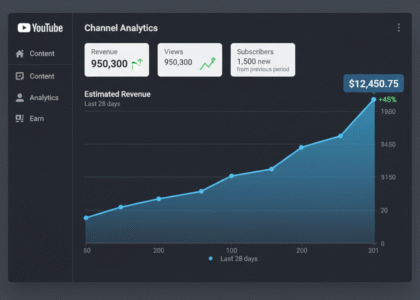Planning for retirement isn’t just about accumulating wealth; it’s equally crucial to strategize how you’ll withdraw those funds to ensure financial stability throughout your golden years. One effective method within retirement withdrawal plans is the Roth Conversion Ladder, a strategy that can provide tax-free income, especially beneficial for those considering early retirement.
Understanding Retirement Withdrawal Plans

Retirement withdrawal plans are systematic approaches to accessing your retirement savings. A well-structured plan helps manage tax liabilities, ensures a steady income stream, and minimizes the risk of outliving your assets. Common strategies include the 4% rule, systematic withdrawal plans (SWPs), and annuities. Each has its merits, but the Roth Conversion Ladder offers unique advantages for tax planning and early access to funds.
What is a Roth Conversion Ladder?
A Roth Conversion Ladder involves converting portions of a traditional IRA or 401(k) into a Roth IRA over several years. After a five-year waiting period, these converted funds can be withdrawn tax- and penalty-free, regardless of age. This strategy allows early retirees to access their retirement funds without incurring the typical 10% early withdrawal penalty associated with traditional retirement accounts.
How Does a Roth Conversion Ladder Work?
Here’s a step-by-step breakdown of implementing a Roth Conversion Ladder:
- Initiate Annual Conversions: Decide on the amount to convert from your traditional IRA or 401(k) to a Roth IRA each year. The goal is to convert enough to meet your annual expenses in retirement.
- Observe the Five-Year Rule: Each conversion has a five-year waiting period before you can withdraw it tax- and penalty-free. Therefore, plan your conversions at least five years before you need the funds.
- Maintain the Ladder: Continue annual conversions for at least five years. After the initial five-year period, you’ll have a continuous stream of funds becoming available each year.
- Manage Tax Implications: Conversions are subject to income tax in the year they are made. Strategize your conversions to avoid bumping into higher tax brackets.
For example, if you plan to retire at 50 and estimate annual expenses of $60,000, you’d start converting $60,000 each year from age 45. By age 50, the first converted amount becomes accessible, and each subsequent year’s conversion follows suit, creating a “ladder” of available funds.
Benefits of a Roth Conversion Ladder: Retirement Withdrawal Plans

- Early Access to Funds: Access your retirement savings before age 59½ without penalties.
- Tax-Free Withdrawals: After the five-year period, withdrawals are tax-free, providing a predictable income stream.
- Tax Diversification: Having both traditional and Roth accounts offers flexibility in managing taxable income during retirement.
Considerations and Potential Drawbacks: Retirement Withdrawal Plans
- Taxable Income Increase: Conversions add to your taxable income in the conversion year, potentially pushing you into a higher tax bracket.
- Complex Planning: Requires meticulous planning to align conversions with your retirement timeline and tax strategy.
- Legislative Risks: Future tax law changes could impact the benefits of Roth accounts.
Actionable Steps to Implement a Roth Conversion Ladder: Retirement Withdrawal Plans
- Assess Your Retirement Needs: Calculate your anticipated annual expenses to determine conversion amounts.
- Evaluate Current Tax Bracket: Understand your current and projected tax brackets to optimize conversion timing and amounts.
- Consult a Financial Advisor: Seek professional guidance to tailor the strategy to your specific situation and navigate complex tax rules.
- Monitor Legislative Changes: Stay informed about tax law changes that could affect Roth conversions.
- Maintain Flexibility: Be prepared to adjust your strategy in response to personal financial changes or broader economic shifts.
Frequently Asked Questions (FAQs)
Q: How much should I convert each year?
A: The amount depends on your annual expenses and tax considerations. Converting too much in one year could push you into a higher tax bracket.
Q: Are there limits on Roth conversions?
A: There’s no annual limit on the amount you can convert to a Roth IRA. However, be mindful of the tax implications.
Q: Does each conversion have a separate five-year waiting period?
A: Yes, each converted amount has its own five-year waiting period before it can be withdrawn tax- and penalty-free.
Q: Can I start a Roth Conversion Ladder after age 59½?
A: While you can convert funds at any age, the primary benefit of avoiding early withdrawal penalties is most relevant before age 59½.
Q: How do market conditions affect a Roth Conversion Ladder?
A: Market downturns can be advantageous for conversions, as reduced account values mean lower taxable amounts upon conversion.
Conclusion
A Roth Conversion Ladder can be a powerful tool within retirement withdrawal plans, offering tax-free and penalty-free access to your retirement savings before traditional retirement age. However, it requires careful planning and consideration of tax implications. By understanding the mechanics and potential benefits, you can determine if this strategy aligns with your retirement goals.
Discover smarter ways to invest and grow your portfolio! Visit GetCashVibe today for more expert tips.






